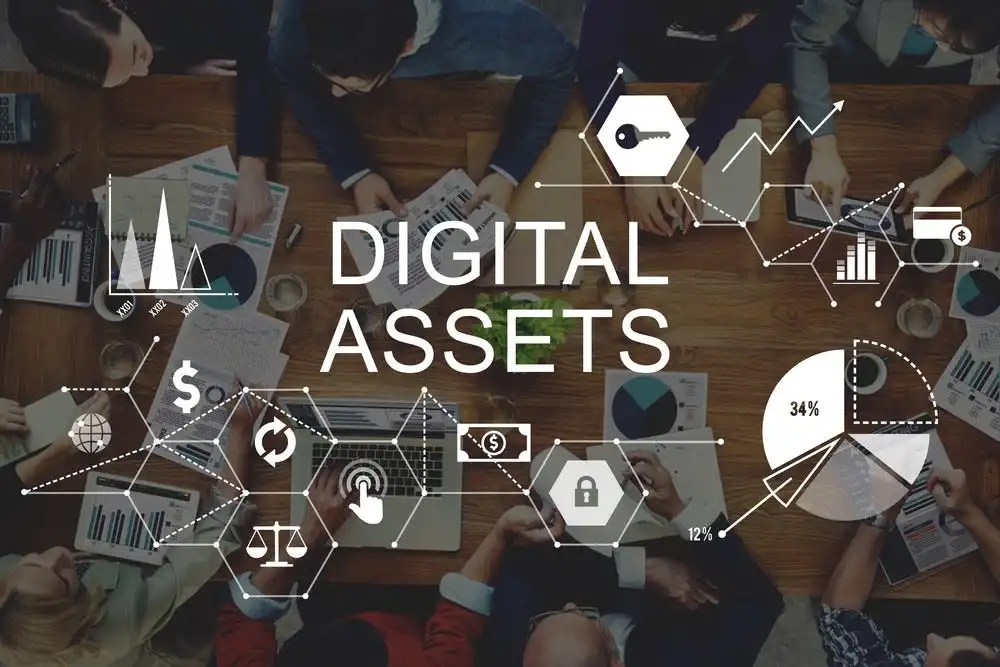Digital asset custody is rapidly becoming a cornerstone in the evolution of investment banking, reshaping how financial institutions manage, safeguard, and leverage crypto and tokenized assets. As digital assets gain mainstream acceptance, digital asset custody solutions—spanning blockchain custody, crypto asset management, and secure digital storage—are essential to build trust and unlock new fintech infrastructure opportunities for institutional investors. This article explores the evolution, current trends, advanced tactics, and real-world applications of digital asset custody, while positioning the Investment Banking, Capital Markets & Financial Analytics course as the premier learning pathway for professionals aiming to lead in this space.
Introduction: Why Digital Asset Custody Matters Now
The rise of cryptocurrencies and tokenized assets has introduced a new asset class that demands innovative custody solutions. Unlike traditional assets, digital assets exist as cryptographic keys on decentralized blockchains, requiring custodians to securely store these keys rather than the assets themselves. This nuance makes digital asset custody not just a technical challenge but a strategic imperative for investment banks aiming to service institutional clients safely and compliantly. Integrating blockchain custody and crypto asset management into existing banking frameworks is critical to enable broader adoption and to instill confidence in digital investments. The role of secure digital storage and robust compliance frameworks cannot be overstated in this transformative journey.
The Evolution of Digital Asset Custody in Investment Banking
Historically, custody in investment banking focused on physical or electronic securities. However, the decentralized nature of digital assets, recorded on blockchain ledgers, introduced unprecedented complexities. Early crypto investors relied on self-custody solutions, but institutional adoption necessitated professional custodianship with fiduciary oversight, risk management, and regulatory compliance.
Banks and fintech firms now offer custody services that combine traditional safeguards—such as asset segregation and regulatory supervision—with advanced technologies like multi-party computation (MPC) and cold wallet storage. The Office of the Comptroller of the Currency’s 2025 guidance reinforced that national banks can act as qualified custodians for digital assets, expanding the legitimacy and trust in these services. This regulatory clarity catalyzes banks’ strategic entry into digital asset custody, leveraging their expertise in audit, compliance, and risk governance.
Latest Features and Trends in Digital Asset Custody
Advanced Security Technologies
- Multi-Party Computation (MPC): MPC splits cryptographic keys into multiple parts, requiring several parties to authorize transactions, significantly reducing risks from key theft or loss.
- Cold, Warm, and Hot Wallets: Custodians use these wallet types to balance security and accessibility. Cold wallets are offline for maximum security, hot wallets enable fast trading, and warm wallets offer intermediate access speed with strong security.
Institutional-Grade Trust Frameworks
Custodianship now demands bank-grade controls: client asset segregation, insurance coverage, regulatory oversight, and fiduciary duties, which are critical to overcoming the “not your keys, not your coins” dilemma. Hybrid models are emerging where fintech specialists partner with traditional banks to combine technology innovation with institutional trust.
Expanding Service Offerings
Custody services are evolving beyond safekeeping to include crypto-to-fiat exchanges, bitcoin-backed lending, and tokenization platforms, fueling new revenue streams and market opportunities.
Advanced Tactics for Success in Digital Asset Custody
Investment banks and fintech firms aiming to excel must:
- Conduct a thorough strategic assessment of institutional capabilities, client needs, and regulatory landscape before launching custody services.
- Implement role-based access controls, multi-signature transactions, and proof-of-reserves audits to ensure security and transparency.
- Leverage AI and analytics for real-time risk monitoring and compliance reporting, enhancing operational efficiency.
- Develop partnerships with regulated sub-custodians and technology providers to scale capabilities without compromising security or compliance.
The Power of Content, Storytelling, and Community in Custody Adoption
Building trust in digital asset custody is not only a technical challenge but also a communication one. Banks and custodians must educate their clients and the broader market on the safety, compliance, and benefits of professional custody solutions. Storytelling through case studies, user testimonials, and transparent reporting helps demystify crypto custody and drives adoption. Community engagement through webinars, expert panels, and partnerships with industry bodies fosters a shared understanding of custody best practices and regulatory developments, strengthening the ecosystem.
Case Study: Institutional Trust through Innovation
A leading crypto custodian exemplifies how combining cutting-edge technology with institutional-grade controls can drive market leadership. Launched as a response to institutional demand for secure crypto storage, this custodian quickly gained trust by adhering to strict regulatory standards and insurance protections. By implementing MPC technology, comprehensive compliance frameworks, and transparent audits, it has managed billions in assets with zero major security breaches, supporting over 100 institutional clients globally. This success underscores the importance of integrating fintech innovation with rigorous operational discipline in digital asset custody.
Why the Investment Banking, Capital Markets & Financial Analytics Course Is the Best Choice for Aspiring Custody Professionals
The Investment Banking, Capital Markets & Financial Analytics course offers unmatched advantages for professionals seeking to master digital asset custody:
- AI-Powered Learning: Cutting-edge modules on AI applications in investment banking, including crypto asset management and blockchain custody, provide practical, future-ready skills.
- Industry-Aligned Curriculum: Developed with leading industry partners, ensuring relevance to current fintech infrastructure and regulatory trends.
- Hands-On Internships: Real-world projects and internships with top financial institutions in Mumbai enable students to apply knowledge and build professional networks.
- Experienced Faculty: Instructors with deep investment banking and fintech backgrounds deliver content grounded in real business challenges and innovations.
- Placement Outcomes: Proven track record of successful placements in investment banking and fintech roles specializing in digital assets.
Compared to alternatives, the blend of AI-led training, practical experience, and faculty expertise makes it the superior choice for professionals targeting leadership in digital asset custody.
Actionable Tips for Marketers and Financial Professionals
- Educate Clients: Use clear, jargon-free content to explain the benefits and security features of digital asset custody.
- Leverage Analytics: Monitor custody service usage and client feedback to optimize offerings.
- Build Partnerships: Collaborate with fintech providers and regulatory bodies to stay ahead of compliance changes.
- Invest in Training: Encourage teams to pursue specialized courses to strengthen internal expertise.
- Communicate Trust: Highlight insurance, regulatory adherence, and technology safeguards in marketing materials.
Conclusion
Digital asset custody is not just a service; it is the next evolution in investment banking that bridges traditional financial trust with the innovation of blockchain and crypto asset management. As this market expands, institutions must adopt secure, compliant custody solutions to unlock new opportunities and build investor confidence. For professionals aiming to lead this transformation, the Investment Banking, Capital Markets & Financial Analytics course offers the most comprehensive, industry-relevant training with AI-powered modules and real-world experience. Embrace the future of investment banking by mastering digital asset custody today. Explore the course and enroll now.
FAQs
Q1: What is digital asset custody and why is it important?
Digital asset custody is the secure storage and management of cryptographic keys that prove ownership of digital assets like cryptocurrencies and tokenized assets. It is critical to protect these keys from theft or loss, ensuring investor confidence and regulatory compliance in digital asset markets.
Q2: How does blockchain custody differ from traditional custody?
Blockchain custody involves safeguarding cryptographic keys on decentralized ledgers, whereas traditional custody holds physical or electronic securities. Blockchain custody requires advanced cryptographic and multi-signature technologies to secure assets that exist only as digital tokens on blockchains.
Q3: What are the main challenges in crypto asset management?
Challenges include securing private keys against cyber threats, complying with evolving regulations, managing operational risks, and ensuring liquidity and accessibility without compromising security.
Q4: How do fintech infrastructure advancements improve digital asset custody?
Fintech innovations like MPC, AI-powered risk analytics, and real-time reporting enhance security, operational efficiency, and compliance capabilities in digital asset custody systems.
Q5: Why should investment banks adopt digital asset custody services?
Adoption allows banks to leverage existing fiduciary, risk management, and compliance expertise to serve growing institutional demand for crypto and tokenized assets, creating new revenue streams and competitive advantage.
Q6: How does the Investment Banking, Capital Markets & Financial Analytics course prepare professionals for digital asset custody roles?
The course offers AI-led, hands-on training with industry partnerships, experienced faculty, and internships in Mumbai, equipping students with cutting-edge skills in crypto asset management, blockchain custody, and fintech infrastructure needed for modern investment banking.










